Many terrarium builders own a wide variety of terrariums that resemble diverse biomes. One of the most popular terrarium biomes to make is the desert terrarium, as it’s generally very easy to make, and is an excellent habitat for a lot of reptiles and other desert animals that people like to keep as pets.
The best animals for a desert terrarium include:
These animals are all suitable for a desert terrarium, though they all have their unique environmental needs like temperature, space, humidity, type and amount of light, water, terrain, feeding, etc.
Animals of separate species should almost never be kept inside the same terrarium.
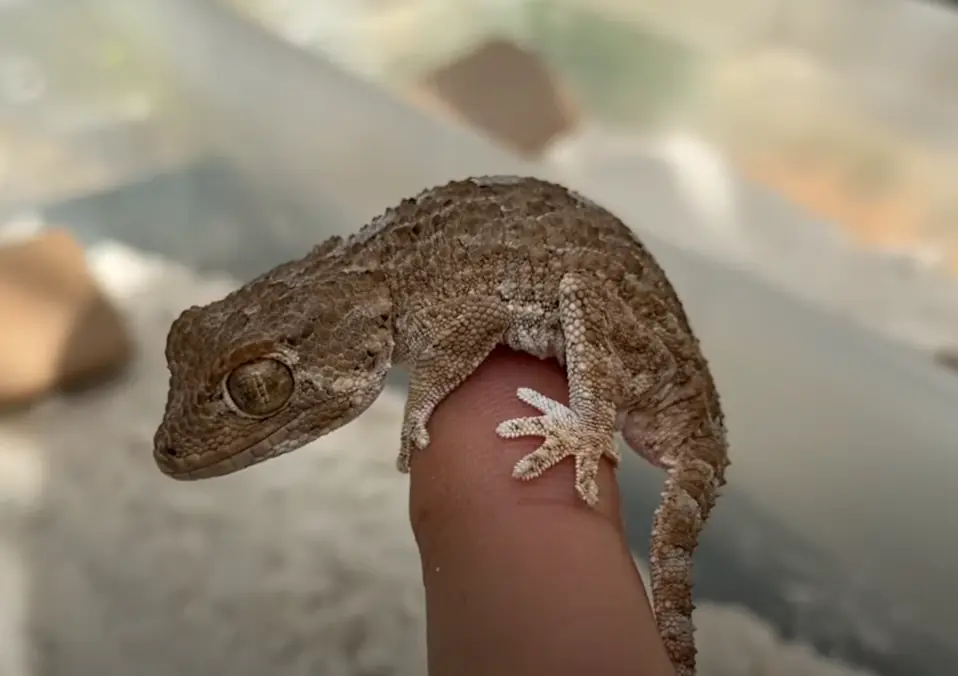
Australian helmeted geckos are an excellent animal to keep in your desert terrarium. They thrive in captivity and require a little more humidity, allowing you to add more plants to your desert terrarium.
A 10-gallon desert terrarium would be ideal to house two to three Australian helmeted geckos. Sand works as a substrate. Cage items are essential because helmeted geckos spend most of the day hiding.

Bearded dragons are another excellent animal to house in your terrarium. They’re very gentle, and active reptiless that you can expect to see a lot of during the day.
Bearded dragons require a warm habitat, as they rely on external heat to keep warm, so a warming light is essential in your desert terrarium for a bearded dragon.
They are omnivores, and aren’t too picky with what they eat. You can feed them insects (even beetles), fruit, flowers, leaves, small lizards, etc.
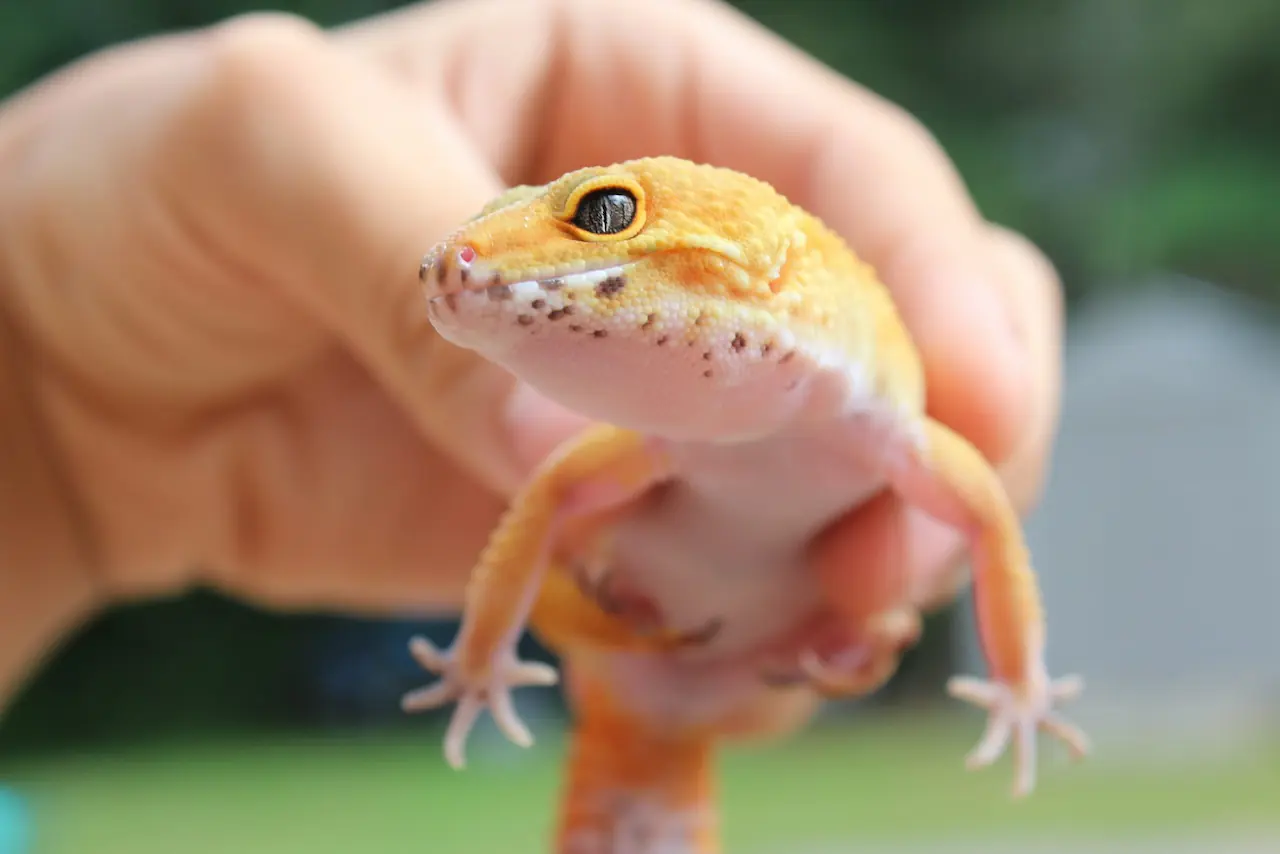
Leopard geckos are another common desert terrarium animal. They are not overly demanding, and don’t require any special lighting conditions.
Leopard geckos need a fresh supply of water, as well as a wet patch in their terrarium. A 10-gallon tank is a minimum for just one leopard gecko, and every additional leopard gecko will require 5 gallons more.
They prefer long and shallow well-ventilated enclosures. They should ideally be housed in tanks that open from the front, as they’re easier to clean but also because opening the tank from the top might frighten the geckos.
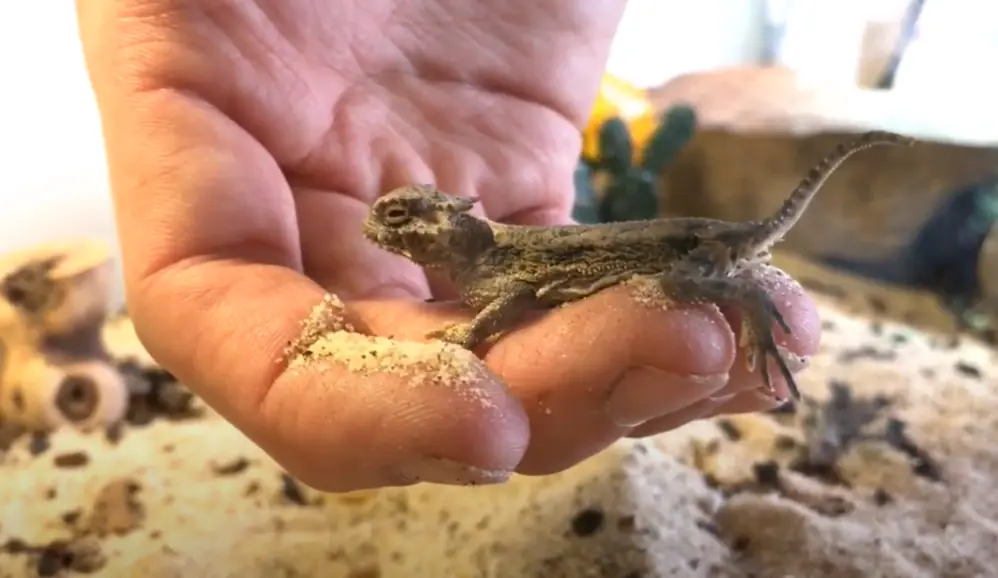
The Desert Horned Lizard, also known as a Horny Toad Lizard, is a solitary animal that is a very popular pet for desert terrariums.
They live in burrows and eat a carnivore diet (insects). They can be fed with ants, crickets, worms, mealworms, and plant material.
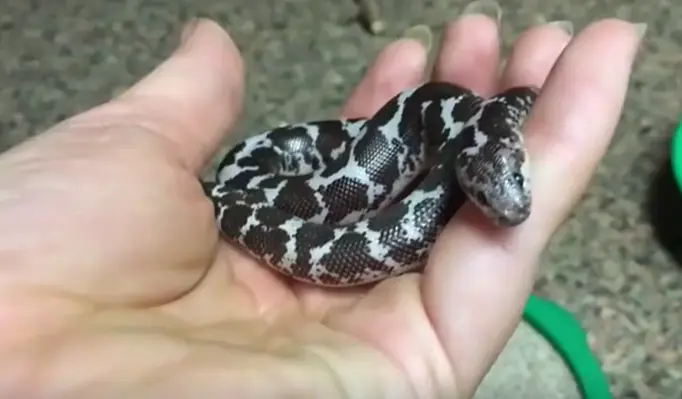
The Kenyan Sand Boa is one of the best snakes to keep in a terrarium as they’re an excellent beginner snake in general, and are very easy to care for in a desert terrarium. They require lots of sand in which they can bury, and heating panels from the bottom of the container. An adult Kenyan Sand Boa should be kept in a container no less than 10 gallons.
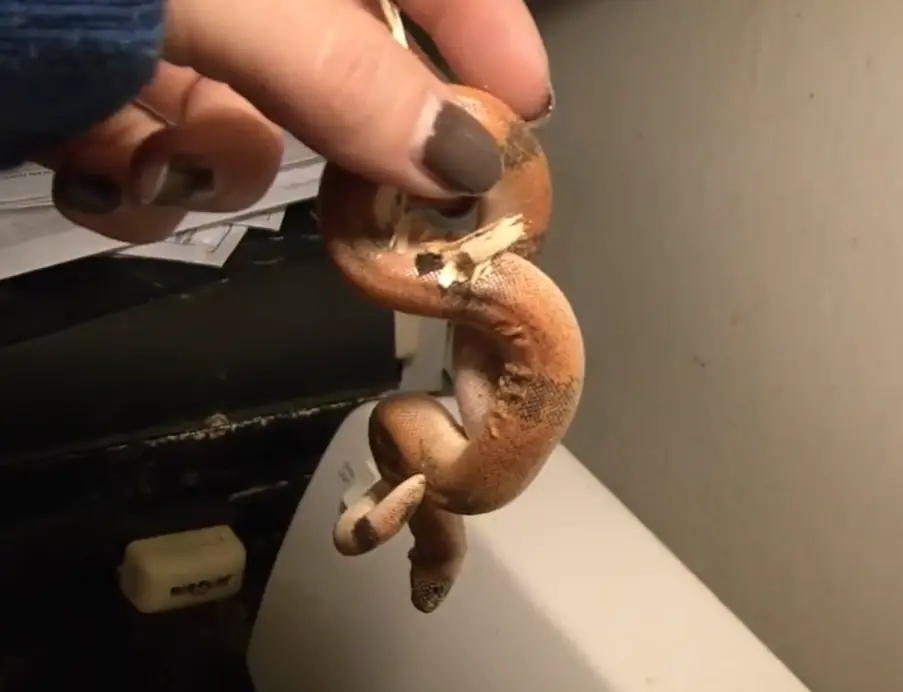
The Indian Sand Boa is the biggest of the Boa class, although no harder to keep than the Kenyan Sand Boa. Because of their large size, a single adult male should be housed in a 20 to 30 gallon desert terrarium.
Like the Kenyan Sand Boa, this snake requires plenty of sand and gravel in which it can burrow and hide. Body contact with the substrate is an essential part of its environment.
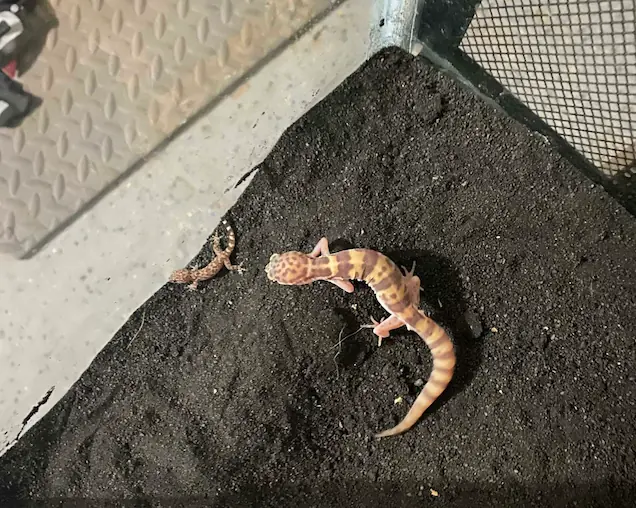
The Western Banded Gecko is a very popular pet to keep in a desert terrarium. They’re very small, and if you own a larger container you could house many of them. A 10-gallon terrarium could house two to three adult Western Banded Geckos.
Keep in mind to never house males together as this might lead to territorial disputes. Use sand as a substrate, and give these geckos places they can use as burrows in their container. Just like the Helmeted Gecko, they require more humidity, so you’ll be able to place diverse plants in the same terrarium.
The temperature should be between 75-85F, with a hotspot of around 95F during the daytime. Also include a humid part in the terrarium, ideally with some sphagnum moss as a substrate.
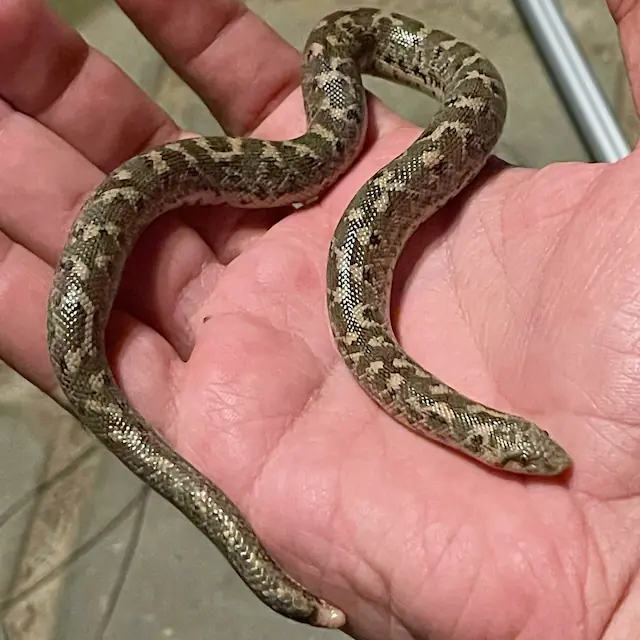
Sand boas are overall great animals to keep in a desert terrarium, which is why so many of them are included here. The Javelin Sand Boa, just like the other sand boas the Javelin sand boa needs lots of sand substrate to burrow, as well as a big container ideally two to three times its size.

The Collared Lizard is a small lizard named after the dark collars on their necks. They’re a great pet to keep in a bioactive desert terrarium, but they do require a bit more care than some other lizards. They need a basking area of 95F and an ambient temperature of 70F. They also require UVB lights as they are a full-time basking species.
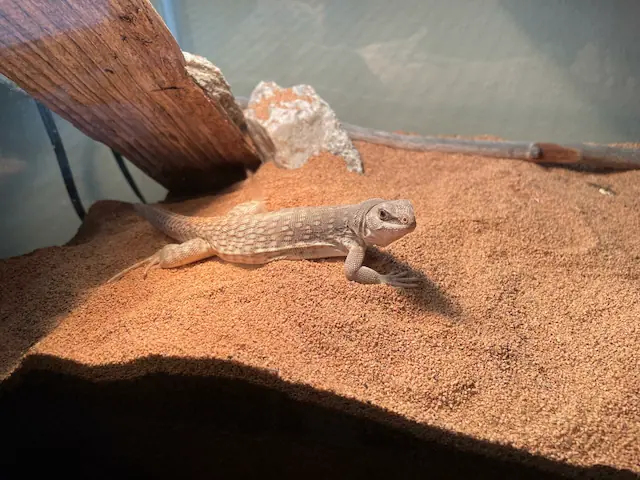
Desert iguanas can be a bit hard to care for, mainly because of heat and light. They require 90 – 105F as high heat is necessary for digestion. Apart from this they need a strong light which will help them grow more rapidly and stay healthy.
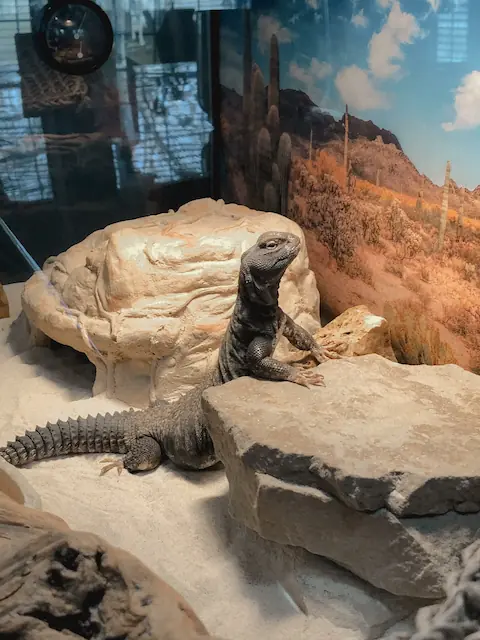
The Mali Uromastyx lizard is a perfect animal for a desert terrarium as it naturally lives in very hot and dry conditions.
They are very easy to care for, provided they have a large terrarium (50-gallon terrarium for an adult mali uromastyx) with stable temperatures.
UVB lights are a must for the Mali uromastyx to absorb calcium. They need very high basking daytime temperatures of 120F, and 70F at nighttime.
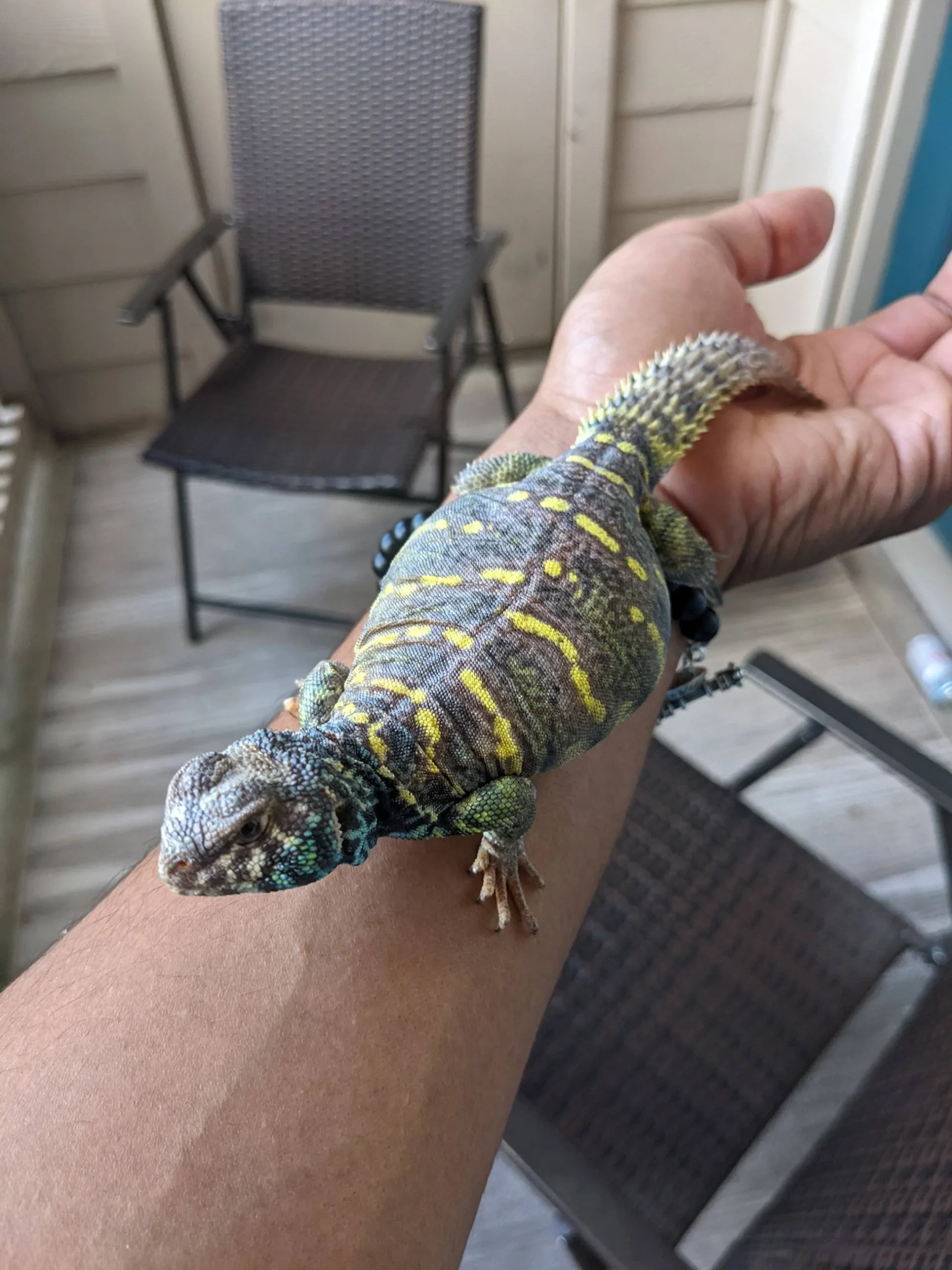
The Ornate uromastyx is another lizard from the uromastux species ideal for a desert terrarium. An adult ornate uromastyx will need a terrarium of 40 to 50 gallons. This lizard loves to bask in the sun, and the terrarium should have a basking spot of 120 to 130F with cooler temperatures of 80 to 90F on the other end.
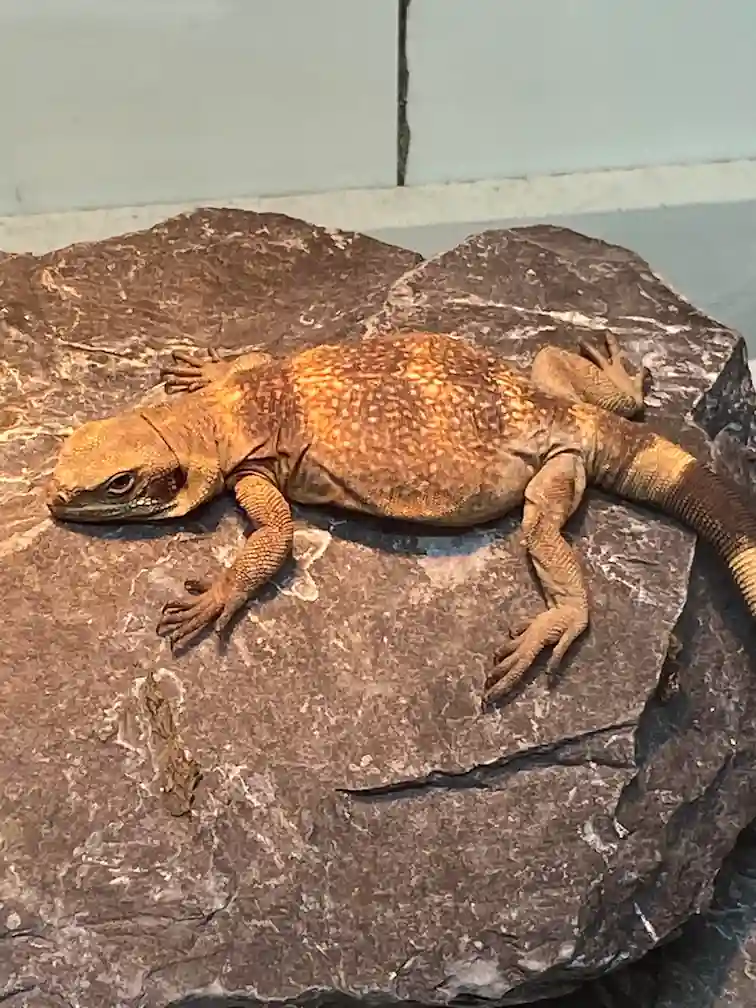
The Ommon chuckwalla is another great animal for your desert terrarium. They have the same requirements as most of the other lizards on this list, which is a big enclosure, with bright light and hot temperatures.
During the day they need a 100-110F basking spot, and cool/room temeratures for the rest of their enclosure. At night they need a bit cooler temperatures of 55F at the lowest – generally room temperature.
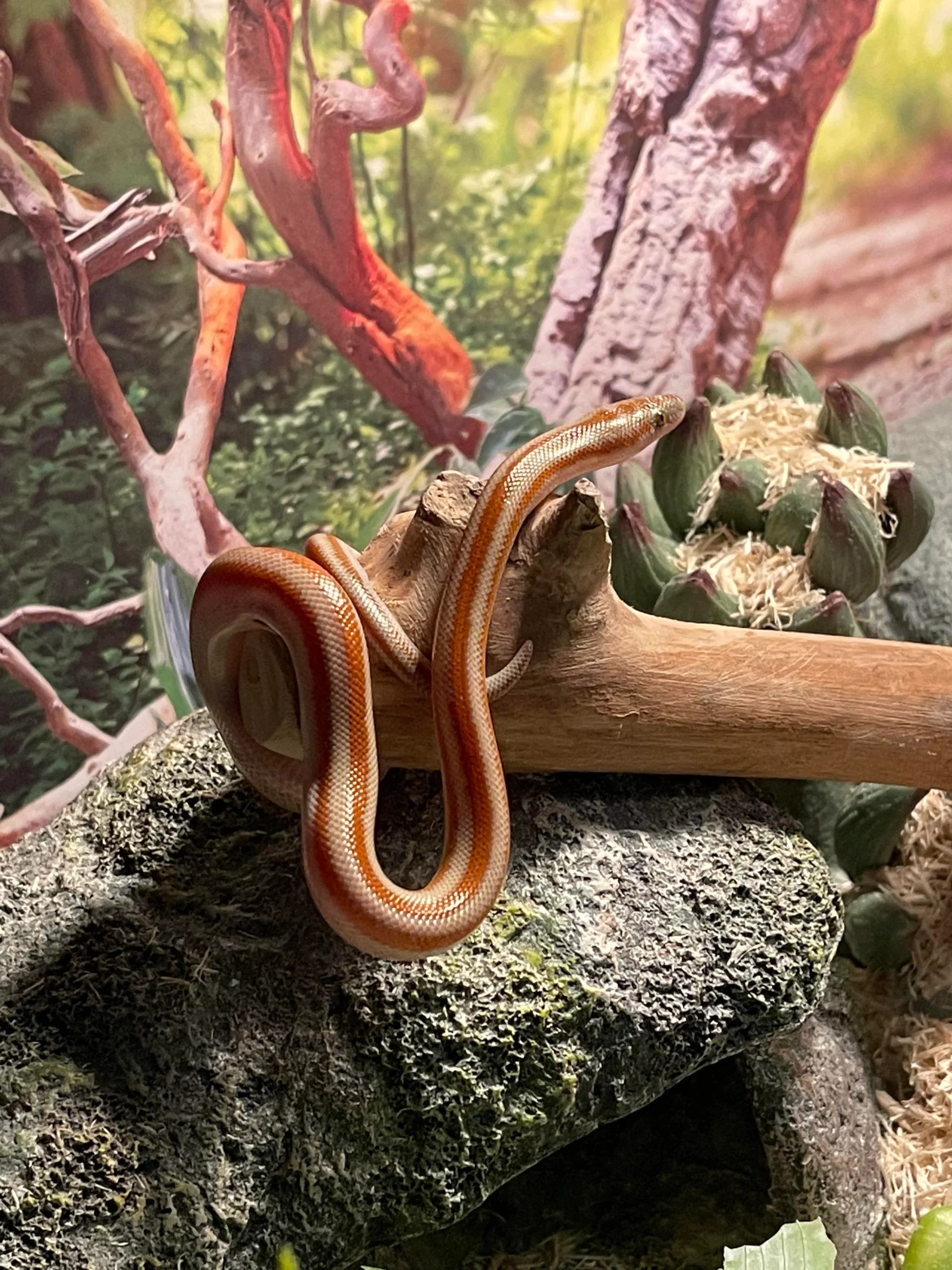
The Rosy Boa is a great snake to keep in a desert terrarium. They require a bit more humidity than some of the other animals, though this can open up doors for more diverse plants. They do need a basking spot of 90 – 95F, and a burrow are with a high humidity of 40-60%.
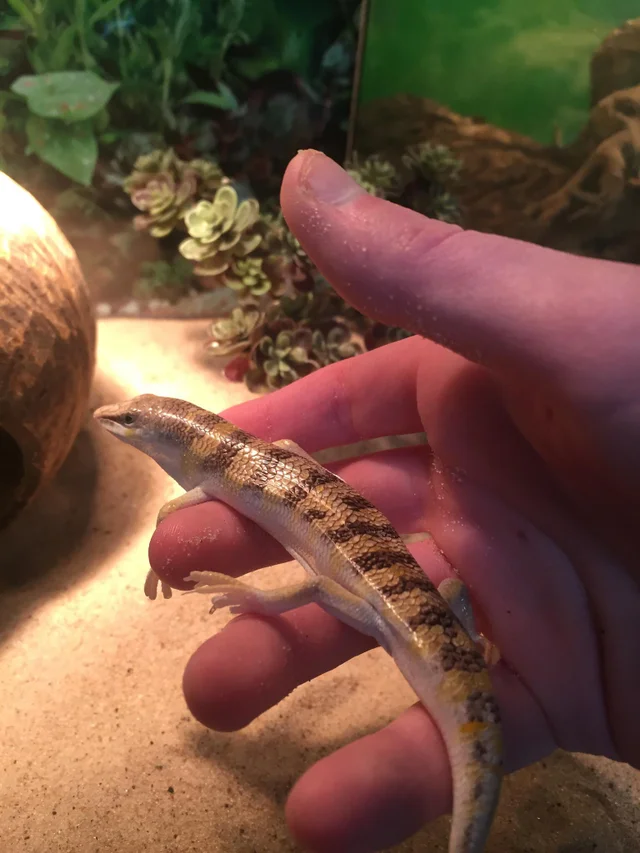
The Sandfish (lizard not an actual fish) is a very intriguing animal, ideal for a desert terrarium. They are called sandfish because they like to “swim” in the sand, dig around, and burrow.
The Sandfish is a small lizard and can be kept in a 10-15 gallon terrarium. They need UVB lights to metabolize calcium, and a 90-95F basking spot temperature, with a cool side of 70-80F.
As per humidity, they don’t have any special needs, just normal house humidity. They are a super easy beginner lizards to care for.
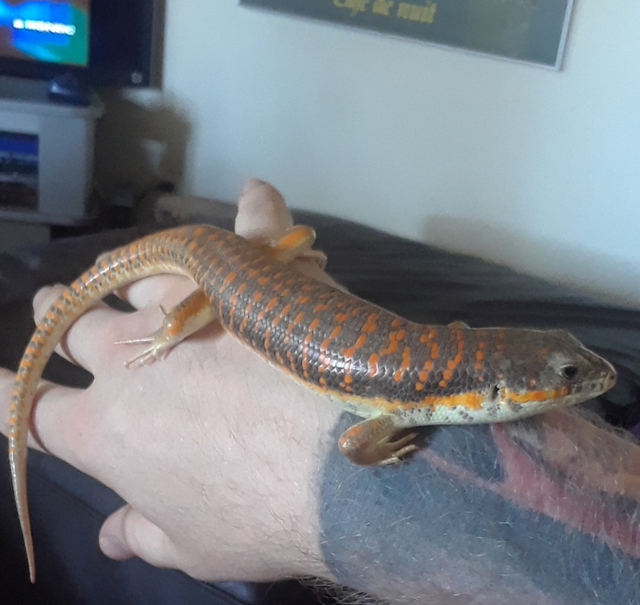
Schneider’s Skins are relatively medium-sized lizards, that are excellent for beginners. They are great animals to keep in a desert terrarium. They require 95-100F for their basking spot and 70F on the cooler end.
They have quirky personalities, they’re very jumpy, and get along great with others of the same species.
They need at least 2-3 inches of the substrate to burrow, and props to hide in. UVB lights are also a must since they are essential for calcium absorption. As per humidity, these lizards can live perfectly fine in room humidity levels, around 40%.
In conclusion, desert terrariums offer a unique and exciting opportunity to create a habitat mimicking arid landscapes, perfect for housing fascinating reptile and snake species. From Australian Helmeted Geckos to Schneider’s Skinks, each animal provides unique characteristics and care requirements, making them ideal for a wide range of pet keepers, from beginners to advanced enthusiasts. It is essential to thoroughly research the species’ needs, such as temperature, lighting, humidity, and space, to ensure their health and well-being. Proper attention to these aspects ensures the animals thrive in their environment and offers owners an enriching experience. Remember, housing species separately and maintaining a carefully designed biome are key to sustaining a harmonious and fully functional desert terrarium.